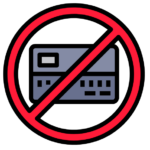If you’ve reviewed your IRS tax transcript and stumbled upon Code 766, you may have found yourself puzzled about what it signifies. Understanding this code is crucial for taxpayers, especially when clarifying your tax credits and refund status. This article will explain IRS Code 766, its implications for your tax return, and how it affects your financial situation.
What Is IRS Code 766?
IRS Code 766 is a transaction code on your tax transcript indicating a credit applied to your account. This typically represents a refundable credit, which may stem from various sources, including overpayments of taxes, stimulus payments, or specific tax credits such as the Earned Income Tax Credit (EITC) or the Child Tax Credit (CTC).
When you see Code 766 followed by a negative number, it generally means you have a credit that can reduce any existing tax debt or increase your potential refund. Understanding the details behind this code is essential for accurate tax filing and planning.
What Is an IRS Tax Transcript?
An IRS tax transcript is a summary document that provides key details about your tax return while protecting your personal information. It includes critical financial data, such as taxable income, filing status, and payment history. You can obtain your tax transcript at no cost via the IRS Get Transcript website.
There are several types of tax transcripts available:
- Tax Account Transcript: Displays basic information, including the type of return filed, marital status, AGI, and taxable income. Available for the current year and up to ten previous years.
- Tax Return Transcript: Contains most of the entries from your original tax return, including your AGI. Accessible for the current year and the three preceding years.
- Record of Account Transcript: This record merges data from both the tax return and tax account transcripts, providing a more comprehensive view. It is available for the current year and the three previous years.
- Wages and Income Transcript: This transcript lists earnings and deductions reported on forms such as W-2s and various 1099s. It is available for the current year and the past ten years.
- Verification of Non-Filing Letter: The IRS has not received a Form 1040 from you for a specific year. Available for the current year and up to three prior years.
Understanding the differences among these transcripts can help you manage your tax affairs more effectively.
How to Read IRS Transcript Codes
IRS transcript codes (TCs) are three-digit numbers that indicate specific actions or statuses related to your tax account. For instance:
- TC 150: Indicates that your return has been accepted.
- TC 766: Reflects tax credits, which can have positive implications for your refund or tax liability.
In addition to these codes, you may encounter other important identifiers on your transcript that can provide insights into your tax situation.
The Significance of Code 766
When you see Code 766 on your IRS tax transcript, it typically indicates a positive development in your tax situation. Here’s a closer look at what this code signifies:
Refundable Credits
The most common reason for Code 766 is the application of refundable credits. Refundable credits can reduce your tax liability and may result in a refund even if you do not owe any taxes. Some examples of refundable credits that may appear alongside Code 766 include:
- Child Tax Credit (CTC): For each qualifying child under 18, you can claim up to $2,000, with a portion refundable if your credit exceeds your tax liability.
- Earned Income Tax Credit (EITC): This credit is designed for low- to moderate-income taxpayers and can provide significant benefits, especially for families with children.
- American Opportunity Tax Credit (AOTC): A partially refundable credit that helps qualify educational expenses.
Overpayments
If you’ve overpaid your taxes in a previous year, the IRS may apply this excess as a credit for your next tax obligations. Code 766 reflects this overpayment, which can benefit your current tax situation.
Stimulus Payments
During economic challenges, stimulus payments were issued to eligible taxpayers. If you qualify for these payments, they might be reflected as a credit on your tax transcript, often accompanied by Code 766.
Interpreting Code 766 about Other Codes
When reviewing your tax transcript, you might encounter Code 766 with other codes, such as Code 898 and Code 767. Understanding these relationships can provide additional context for your tax situation.
Code 766 and Code 898: Garnishment
If Code 766 appears with Code 898, this indicates that the credits applied to your account are subject to garnishment. Garnishments may occur when the IRS seizes a taxpayer’s refund to satisfy outstanding debts, such as:
- State Tax Liabilities: Unpaid state taxes may lead to garnishment of your federal refund.
- Child Support Payments: Past-due child support can also trigger garnishment.
In this case, Code 898 signifies that a refundable credit (Code 766) is allocated to your account but is being withheld to settle these debts. Taxpayers will receive notifications regarding any garnishments affecting their refunds.
Code 766 and Code 767: Reversal of Credit
When Code 766 is linked with Code 767, it indicates a reversal of a previously granted refundable credit. This can happen for several reasons, including:
- Ineligibility for a Credit: If the IRS determines that you are not eligible for a specific credit, Code 767 may negate the benefit of Code 766.
- Audits or Errors: If the IRS discovers an error related to a previously applied credit during an audit, it may reverse the credit using Code 767.
This relationship between the codes is crucial to understanding changes in your refund or liability status.
Understanding Refundable Credits
Several refundable credits may appear on your IRS tax account, typically tied to overpayments or refundable credits. Here’s a summary of some key types:
1. Refundable or Overpayment Credit
If you’ve overpaid your taxes, the IRS may apply this excess as a credit for your next tax year, typically reflected as Code 766.
2. Child Tax Credit (CTC)
The CTC is still partially refundable in 2024. For each child under 18, you can claim up to $2,000, with up to $1,600 refundable.
3. Earned Income Tax Credit (EITC)
This refundable credit is designed to assist low—to moderate-income earners, offering a maximum benefit of up to $7,430 for families with three or more children in 2024.
4. Other Refundable Tax Credits
Various other credits may also be applicable, including:
- Adoption Credit: Aids in covering adoption costs.
- American Opportunity Tax Credit (AOTC): Supports eligible education-related expenses.
- Saver’s Credit: Encourages retirement savings for low-income earners.
- Residential Energy Credit: Offers incentives for making energy-efficient home improvements.
These credits can help reduce your tax liability or result in a refund if they exceed your tax obligations.
Timelines for Receiving Your IRS Tax Refund
The timeframe for receiving your IRS tax refund varies based on how you filed your return and how you opted to receive your refund. Here’s what you need to know:
1. Electronic Filing with Direct Deposit
This is the fastest method for receiving your refund. Most taxpayers who file electronically and select direct deposit can expect their refund within approximately 21 days after the IRS accepts their return.
2. Paper Returns
Filing a paper return leads to a longer processing period. Refunds from paper returns can take up to six weeks after the IRS processes your return.
3. Paper Checks
Choosing a paper check instead of direct deposit generally results in a waiting period of three to four weeks after processing.
If you haven’t received your refund after six weeks, it’s advisable to contact the IRS for assistance.
Common Misconceptions About IRS Code 766
Several misunderstandings regarding IRS Code 766 can lead to confusion:
Not a Penalty
Many taxpayers mistakenly believe that Code 766 signifies a penalty or reduces their refund. This code usually indicates a refundable credit that can increase your refund or reduce your tax liability.
Refund Timing
Another common misconception is that Code 766 indicates the timing of your refund. The appearance of this code merely shows that a credit has been applied; it does not specify when your refund will be issued.
How to Check the Status of Your Tax Refund
To track the progress of your tax refund, the IRS provides a free online tool called “Where’s My Refund?” Here’s how to use it:
- Accessing the Tool: This tool can be found on the IRS official website or through the IRS2Go mobile app. It updates once a day, usually overnight.
- Required Information: To use the tool, you’ll need:
- Your Social Security Number (SSN) or Individual Taxpayer Identification Number (ITIN)
- Your filing status (e.g., Single, Married, Filing Jointly)
- The exact amount of your refund
- Refund Status Stages:
- Received: The IRS has received and is processing your return.
- Approved: Your refund has been approved, and the IRS is preparing to issue it.
- Sent: Your refund has been sent via direct deposit or paper check.
Typically, e-filed returns are processed within three weeks, while paper returns may take longer. Delays can occur due to errors, incomplete returns, or if additional IRS review is required.
Conclusion
Seeing IRS Code 766 on your tax transcript is generally a positive indicator, signifying that a credit has been applied to your account. This often results from overpayments or refundable credits such as the Child Tax Credit or Earned Income Tax Credit, which can positively impact your tax refund or reduce your overall tax liability.
By understanding the implications of this code, along with the various types of transcripts and related codes, you can confidently navigate your tax situation. If you have any concerns or questions, consulting the IRS or a tax professional can clarify and ensure you make the most of the credits available.










